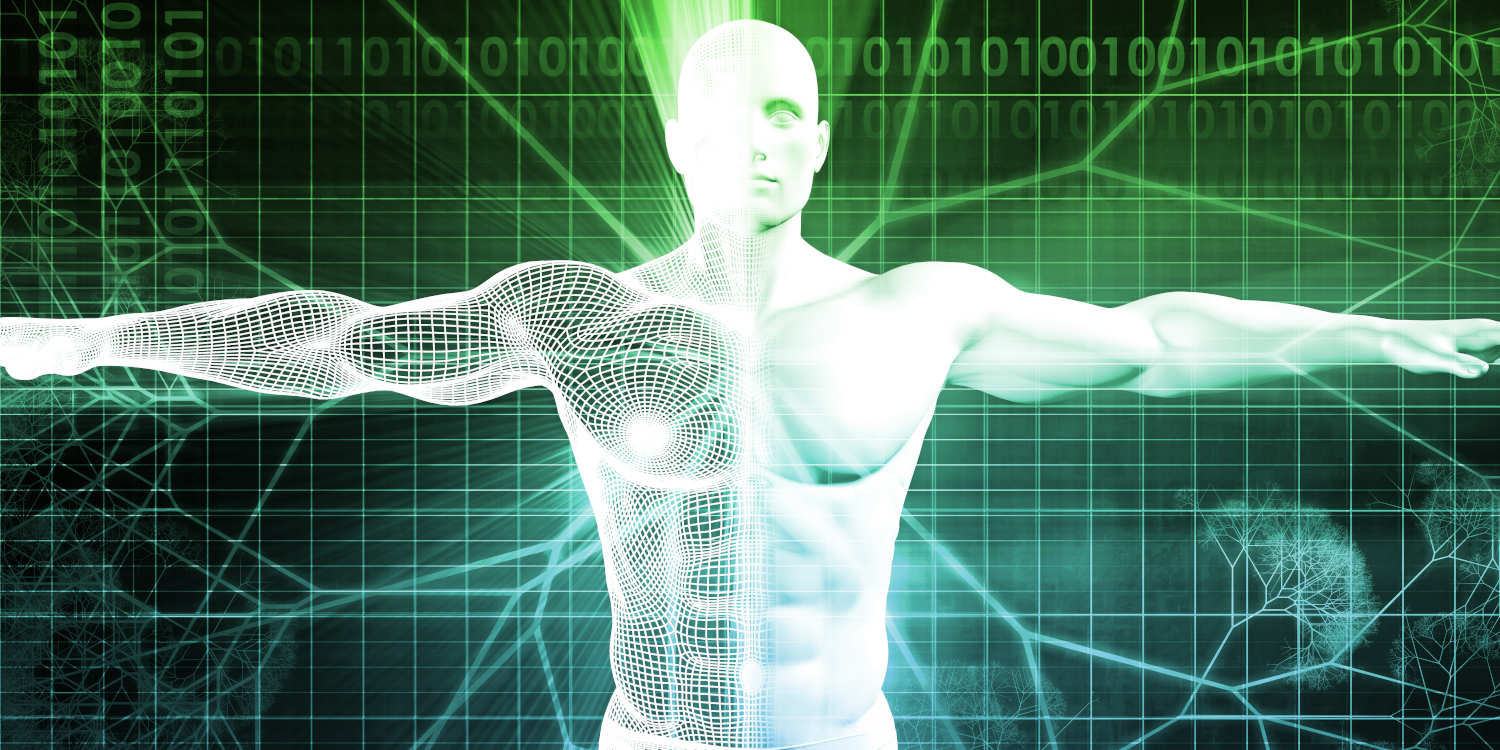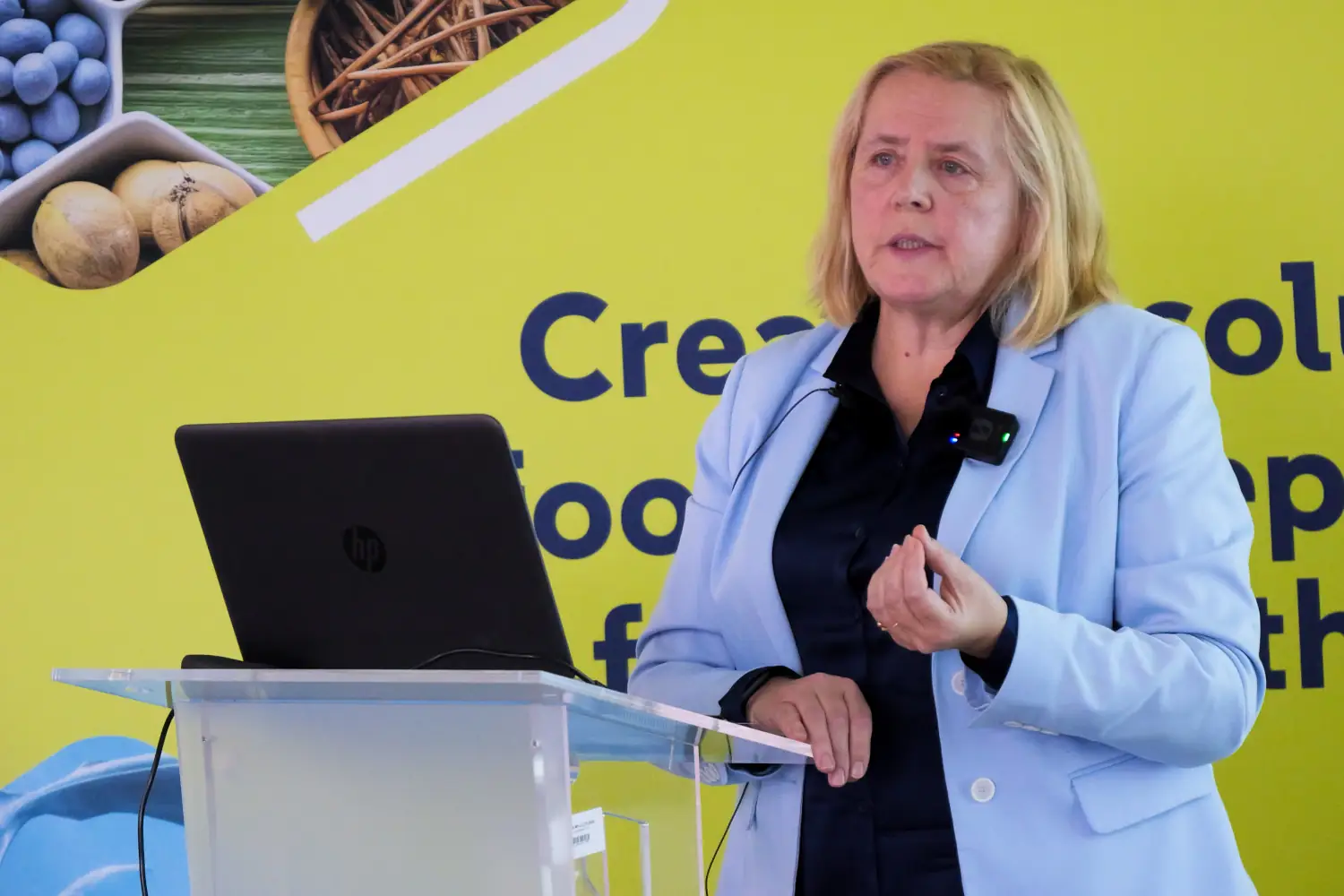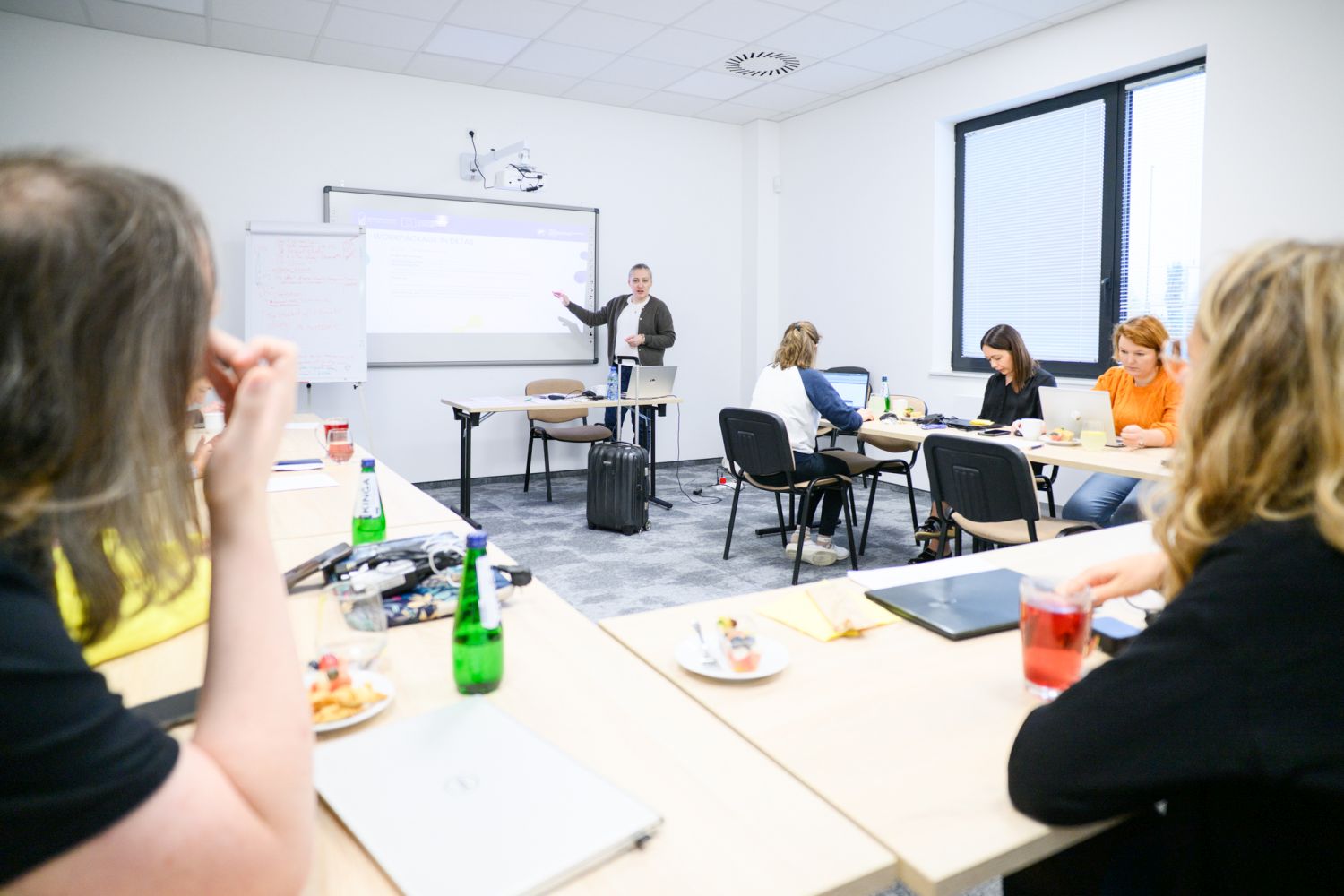“If you love the car you bought, you can drive it your whole life. Treat your body the same way” – interview with Prof. Carsten Carlberg.
Prof. Carsten Carlberg, winner of the prestigious European ERA Chair WELCOME2 grant to create a Center of Excellence in nutrigenomics at the Institute of Animal Reproduction and Food Research of the Polish Academy of Sciences, talks to a journalist Marcin Powęska. He reveals why vitamin D supplementation is so important for our body and how the technology of digital twins may excel the research on the prevention and treatment of diet-related diseases.
Vitamin D is a group of fat-soluble steroidal organic chemical compounds that exert broad physiological effects. Vitamin D is important for our immunity, healthy bones, cardiovascular system, and cancer prevention and supports many important physiological functions of the body. However, not everyone follows the official recommendations for vitamin D supplementation, especially during winter periods. Moreover, Prof. Carlberg’s previous research has shown that everyone responds to supplementation with vitamin D at different levels, thus determining the optimal dose is crucial to our health. This is why understanding the mechanisms responsible for the distribution of vitamin D in our bodies is so important.
Prof. Carlberg is a world-renowned biochemist who has been working on vitamin D for over 30 years. Within the prestigious European ERA Chair WELCOME2 grant, he will establish the Center of Excellence in nutrigenomics at the Institute of Animal Reproduction and Food Research of the Polish Academy of Sciences. Prof. Carlberg and his new interdisciplinary team will conduct research on the influence of nutrition on (epi)genetic predispositions to so-called diet-related diseases.
Marcin Powęska: I won’t ask why you chose Olsztyn as a place to continue your scientific career…
Prof. Carsten Carlberg: Maybe it’s better to ask why did Olsztyn choose me?
MP: And why did Olsztyn choose you? What scientific achievement has led you to the institute in Olsztyn?
CC: I have been working on vitamin D for 32 years, so there is no one scientific achievement that I would single out. Everything that has happened in my scientific career is a sequence of certain events and discoveries related to vitamin D. After so many years of focusing on a single molecule, I feel privileged to be asked by many respected European scientists about their research. All of this has led me to where we are now talking.
MP: And your biggest scientific surprise? After all, 30 years is a long time in the world of science…
CC: I wouldn’t call it a surprise, but 20 years ago the human genome was sequenced and everything has changed since then. Literally: everything. I began to divide science into two periods: before the genome was sequenced and after the genome was sequenced. This event completely changed our perception of the world, and it also changed my perception of the world. I started my scientific career in the days before the sequencing of the human genome, and back then our knowledge of genes was very residual. It was a bit like driving a car over unfamiliar terrain, in the dark. Scientists had an idea about many things, but it was more based on prediction, not certainty. Suddenly someone turned on the light and we saw the road. That made a huge difference.
MP: Another important step was a genetic modification, such as the CRISPR technique (so-called genetic scissors, a method of genetic engineering that allows manipulation of the genome of microorganisms, animals, and plants – note a.)?
CC: CRISPR is a very important technique – like PCR – but just a technique. A tool. Without knowing the human genome, its development would not be possible. It’s a bit like someone riding a bicycle all their life, but one day they get a motorcycle. Both will get you from point A to point B, but a motorcycle will get you there faster. CRISPR was not like reinventing the wheel in genetics, and I consider genome sequencing to be just such an event.
MP: So what should be the next major step of genetics? What’s next?
CC: The next major step in genetics will be to understand our epigenome. For that, however, you need the right tools. It is not enough to take one measurement and draw conclusions based on that. Because, although the genome is identical in all of our cells, the epigenome is different in different tissues, and even in cells that make up the same tissue but at a different age. The epigenome is dynamic, so we can measure it all the time and conclude our bodies based on the results. It’s like fitness bands that measure our steps – they show raw data about whether we move more than we did a year ago, but they don’t conclude us. We have to take care of those ourselves. It’s the same with epigenetic data – samples need to be taken regularly and analyzed, and only then can we determine what to do next. We need to observe the patient for a long time and monitor their health, not measure it at a single moment.
MP: One of your projects carried out in Olsztyn is the project of digital twins. What is it based on?
CC: A hundred years ago people were making prototypes of airplanes, but they were acting a bit blindly. Some of them flew, others fell right after the take-off. Through trial and error, they finally figured out what the plane should look like, and that is how it is today. Today such actions are unthinkable. Now engineers digitally create every part of an airplane before they manufacture it. The digital twin is meant to serve the same function – a virtual model for testing diet and drugs.
MP: This, in turn, is the first step towards personalized medicine. If each of us had a digital twin, would we live longer?
CC: I think we would then live longer in health. There’s a big difference between a healthspan and a lifespan. Lifespan is simple to define – from birth to death. Lifespan is increasing globally, especially in developed countries. We are making steady progress on this issue. But when it comes to healthspan – things are much worse. In an ideal world, everyone would be healthy for almost their entire lifespan. The reality, however, is brutal. Statistics show that after the age of 50 the risk of various diseases increases, people start taking medications, and stop being physically active. They begin to suffer, thus not prolonging their period of health. We aim to change the status quo and keep people healthy for as long as possible.
MP: Can your research in Olsztyn bring humanity closer to this goal?
CC: Yes. In terms of extending the time we can enjoy health, it is about responsibility. You can compare our bodies to a car. You buy a car and you get a 5-6 year warranty, which means you can treat it however you want for that time, but probably after the 7th or 8th year of use certain parts will start to fail badly. But if you take a proper care of the car and handle it properly, it can serve you much longer. Evolution created our bodies to last at least 45 years: 20-25 years are needed to give birth to offspring and another 20 to raise them. Therefore, it can be said that each of us gets a body for at least 45 years – what happens after that, we decide for ourselves. We can live to be 120 years old, but not many people make it. If you love the car you bought, you can drive it all your life. Treat your body the same way.
MP: This approach would be useful for everyone in these uncertain, pandemic times we live in. Do you think a better understanding of the role of vitamin D in our bodies will allow us to better fight COVID-19?
CC: Our immune system can be trained by vitamin D in many different ways. So if we provide our body with adequate levels of vitamin D, we will provide our body with a strong immune system that is effective against a variety of pathogens, including SARS-CoV-2. Vitamin D will not protect us from getting COVID-19, it is not a shield of any kind, but it can protect us from a severe form of the disease with a well-trained immune system. The same goes with vaccines. Autoimmune diseases, on the other hand, are the complete opposite of infections. Our body reacts in the wrong way to some agent and attacks itself. Vitamin D helps to mute this process.
MP: How much vitamin D should we take to maintain this balance?
CC: Each of us has different needs and different predispositions. Vitamin D supplementation for everyone should look a little different. With specialized testing, we can find out what dose is right for us. If we don’t want to do this, I recommend taking a low dose of vitamin D, which according to my research is five times more than the pharmacists suggest anyway. We will not harm ourselves and we will meet our body’s need for this compound.
MP: What else will you be doing in Olsztyn?
CC: I will mainly deal with the analysis of gene regulation on the scale of the whole human genome, bearing in mind changes in its epigenome and transcriptome. I am also interested in a close cooperation and integration of research conducted in the two divisions of the Institute: Reproductive Biology and Food Sciences, which will allow us to extend the investigations also to the changes at level of metabolome and proteome. A key element of the activities will be the already mentioned project of digital twins, i.e. models of healthy and sick individuals, which will be tested for the selection of diet, physical activity, and medication. All this will be done within the Center of Excellence in nutrigenomics, established at the Institute.






